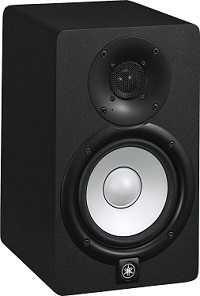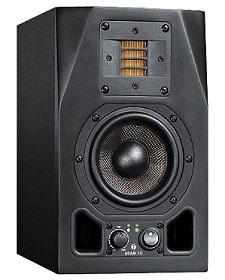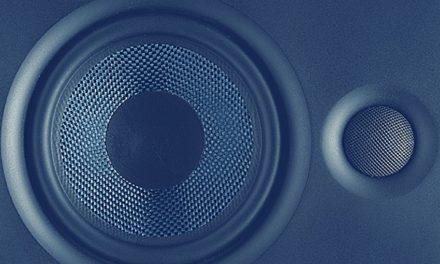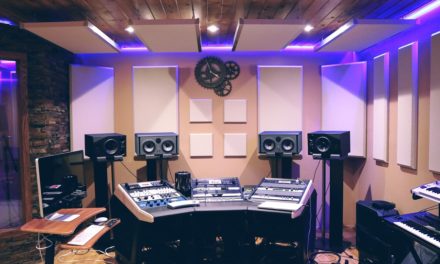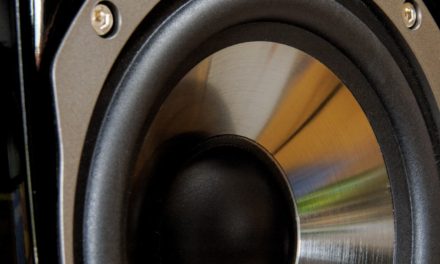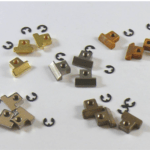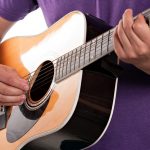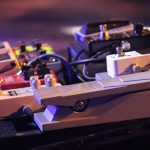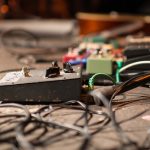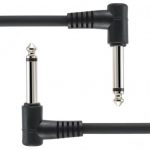Any links on this page that lead to products on Amazon are affiliate links and I earn a commission if you make a purchase. Thanks in advance for your support!
Best Pro Studio Monitors Under $1,000 A Pair
This article on the best studio monitors under $1,000 a pair is the third in a series on the best studio monitors/speakers available today.
Previous articles covered lower-priced monitors – below are the links to those articles:
The best budget studio monitors under $300 a pair
The best home/project studio monitors from $300 to $500 a pair
Update Notes:
This article was updated August 26, 2019.
I updated the content throughout the reviews and added Pros and Cons tables.
Today I’m going to focus on the best monitors between $500 and $1,000 a pair.
At this price point, you can buy excellent professional-quality studio monitors that will be ideal for home studio recording, project studio music production, video editing, or any other uses.
Studio Monitor Buying Guide
If you are new to buying monitors, please check out my Studio Monitors 101: A How-To Guide To Buying The Best Studio Monitors For Your Home Studio article. You’ll learn the differences between monitors and speakers, types of studio monitors, monitor design, and much more.
Studio Monitor Basics
The primary role of studio monitors is to give you an accurate, uncolored and transparent picture of the music you are creating.
Around the $1,000 price point, manufacturers can incorporate high-quality components and engineering to create great sounding monitors without scrimping on quality. You’ll end up with pro-level monitors that won’t need to be replaced or upgraded for many years.
Studio monitors from $500 to $1,000 give you the following features and benefits:
- a larger woofer size (8” and up) for tighter and deeper bass response
- better tweeter design and construction for focused highs
- better cabinet construction/port design for improved sound reproduction, imaging, clarity, and bass response
- more power for increased volume without distortion
- flatter frequency response overall
Pro Tip
The key to killer mixes is an accurate monitoring system used in an acoustically treated room. You’ll get the best results with your monitors by including proper studio acoustic treatment like acoustic panels, bass traps, diffusers, etc.
Best Pro Studio Monitors/Speakers Under $1,000 A Pair
| Image | Title | Price | Prime | Buy |
|---|---|---|---|---|
 | Focal Alpha 65 6.5" Active 2-Way Near Field Professional Monitors (Pair) | PrimeEligible | Amazon | |
 | Yamaha HS8 Powered Studio Monitor Pair with XLR-Cables Insolation Monitor PAD and Speaker Stands | PrimeEligible | Amazon | |
 | Mackie HR624mk2 6-inch 2-Way Studio Monitor (Single Speaker) | PrimeEligible | Amazon | |
 | Adam Audio A3X 4.5" 50W Active 2-Way Studio Monitor (Pair) wth 1 Year Free Extended Warranty | X | Amazon | |
 | Adam Audio A5X 2-way Studio Monitor (Pair) | X | Amazon |
Table of Contents
Focal is a well-established French manufacturer of high-end loudspeakers, headphones and professional studio monitors.
The Alpha 65 is their entry-level active powered studio monitor and combines many of the features from their flagship SM series into a much more affordable package (at half the price!)
Focal monitors have always been sought-after by mixers, producers, and studio owners, and the Alpha 65 is a terrific choice in the under $1,000 range. It offers excellent stereo imaging, crisp highs, clear defined mids, and a punchy low end.
Many users swear these are the best studio reference monitors they have ever owned!
Focal Alpha 65 Studio Monitor Overview
Sound On Sound Magazine had this to say about the Alpha 65:
“The Focal Alpha 65 delivers a wonderfully detailed, dynamic and tonally balanced sound within a sizeable sweet spot.
Every element of the soundscape has a real sense of clarity and position. Across the mid-range, reproduction was extremely detailed, and this gave vocals, acoustic instruments and percussion a feeling of real presence.”
Rear Controls
On the rear, the Alpha 65s have high and low shelving EQ controls, RCA and XLR inputs with a 0dB/+6dB sensitivity switch, and a power switch.
There is no volume knob, so you’ll need to control volume from your audio interface.<
Automatic Standby Mode
These monitors incorporate a power-saving Automatic Standby Mode where they go into Standby mode after 30 minutes without detecting an audio signal. Power consumption reduces to 0.5W in Standby mode.
When activated again, the audio fades in over a few seconds. Some users find this annoying, and it’s not a feature that can be turned off.
Break-In Period
For the first 20 hours, Focal recommends using the Alpha 65s at moderate levels with significant low-frequency content. This break-in period helps the monitor’s mechanical elements to settle in and provide optimum sound and performance.
PROS
- Best in class studio monitors that sound much more expensive than they are
- Excellent stereo imaging
- Crisp highs, clear defined mids, and a punchy low end
CONS
- Some users don’t like the automatic standby mode
Focal Alpha 65 Specs:
- Design: 2-way front-ported
- Woofer: 6.5” polyglass
- Tweeter: 1” aluminum inverted dome
- Frequency response: 40Hz – 22kHz
- 105 watt total (70W/35W) bi-amped Class AB amplifiers
- XLR and RCA input jacks
- Weight: 26 lbs. per monitor
Focal Alpha 65 Studio Monitors
| Image | Title | Price | Prime | Buy |
|---|---|---|---|---|
 | Focal: Alpha 50 Professional Monitoring Loudspeaker (Pair) | PrimeEligible | Amazon |
Yamaha HS8 Studio Monitors
The Yamaha HS8 is the big brother of the HS5 featured in my Best Home/Project Studio Monitors Under $500 article. They’re the successor to the famous NS-10M monitors that many classic pop and rock records were mixed on in the ’70s, ’80s, and ’90s.
Yamaha has brought that heritage into the modern-day HS8 studio monitors and added new features that make them outstanding monitors in their price class.
Yamaha HS Series Powered Studio Monitors
Rear Controls
The rear features ¼” TRS and XLR inputs, a Room control switch with a -2dB or -4dB cut, a +2dB/-2dB High Trim switch, and a volume control.
How Does It Sound?
The HS8 is notable for its flat frequency response, smooth highs and mids, and punchy low end. Users love its excellent stereo imaging, and the ability to mix for hours without getting ear fatigue that is all too common on cheaper monitors.
Many users who long to buy a pair of classic NS-10s but can’t find them are very happy with the HS8s. More than one buyer has commented that it’s like having NS-10s but without their sound flaws.
Overall, this is a fantastic sounding nearfield monitor that delivers excellent results.
PROS
- Excellent overall monitors with an extremely flat response
- Smooth highs and mids and punchy low end
- Wide sweet spot
CONS
- None
Yamaha HS8 Studio Monitors Specs:
- Design: 2-way rear ported
- Woofer: 8” cone
- Tweeter: 1” dome, internal crossover at 2kH
- Frequency response: 38Hz – 30kHz
- 120 watt total bi-amped Class AB amplifiers
- XLR and ¼” input jacks
- Weight: 20.7 lbs.
Yamaha HS8 Studio Monitors
| Image | Title | Price | Prime | Buy |
|---|---|---|---|---|
 | Yamaha HS8 Powered Studio Monitor Pair with XLR-Cables Insolation Monitor PAD and Speaker Stands | PrimeEligible | Amazon |
Mackie HR624 Mk 2 Studio Monitors
Mackie is a well-respected manufacturer of pro music gear for many decades.
Almost everyone who has been in the music business for any length of time has owned Mackie gear at some point. I had two of their 24.8 mixing boards in my studio before I finally moved to “mixing in the box.”
In the film/TV composer world, many great-sounding tracks have been created and mixed on a set of HR624s. For pro media composers who routinely work in many different styles of music, the HR624s are known for helping create mixes that translate well in the real world.
The HR624 Mk 2 active powered monitors are the second generation of these widely-used originals. The Mk2 is slightly larger than the original model, and now features rounded corners (for reduced diffraction), a redesigned tweeter waveguide, and glossy black finish, and even a logo that rotates when the monitors are placed on their sides!
Mackie HR624MK2 Studio Monitor Quickview
Monitor Design
The HR624 Mk 2 is different than the other monitors featured in this article in that it uses a sealed monitor design, which means that the cabinet is completely sealed and does not incorporate a port.
Instead, the HR624 incorporates a passive radiator at the rear –a passive speaker – that generates sound when the real speaker is activated during sound playback.
Audiophiles disagree on which is better, but the consensus is that a sealed monitor is better able to handle low frequencies more accurately than a port or duct.
Zero-Edge Baffle
The HR624 incorporates Mackie’s Zero-Edge Baffle technology that they claim helps create a crystal clear image of your mix.
These monitors are highly recommended by composers, producers, and mixers who are in the studio for many hours and need monitors that can handle the workload. They’re among the best active studio monitors in this price range.
PROS
- Smooth high end and very clean mids with lots of detail
- Tight deep bass response
CONS
- Rear passive radiator design not ideal for placing close to walls or corners
Mackie HR624 mk II Specs:
- Design: 2-way
- Woofer: 6.7” low-distortion driver
- Tweeter: 1” titanium dome ferrofluid-cooled
- Frequency response: 49Hz – 20kHz
- 140 watts (combined) twin FR Series amplifiers
- XLR, RCA, and ¼” input jacks
- Weight: 23.4 lbs.
Mackie HR624 mk II Studio Monitors
| Image | Title | Price | Prime | Buy |
|---|---|---|---|---|
 | Mackie HR624mk2 6-inch 2-Way Studio Monitor (Single Speaker) | PrimeEligible | Amazon |
Adam Audio A3X and A5X Studio Monitors
Adam Audio is a pro audio company based in Berlin, Germany. Their only products are loudspeakers and monitors, and they have built a reputation for making top-quality monitors for discerning professional users. Their high-end monitors have found homes in many studios all over the world.
Adam Audio Factory Visit
The A3X is the baby of the AX-Series line of pro monitors. It’s designed for professional use in studios with limited space such as home project studios or mobile recording setups.
The A5X is one step up from the A3X and has found an audience in-home project studios as well as in television studios, post-production suites, and remote broadcast vans.
Both monitors are on the small side, which makes them an excellent choice for studios with limited space.
AX Features
The first thing you notice about these monitors is that they have a cool industrial vibe. The tweeters are especially eye-catching. Both models employ Adam’s proprietary Accelerating Ribbon Technology (ART) folded-ribbon tweeters. This technology was designed to mimic the way human vocal cords work.
If you look at the specs, you’ll notice the high-frequency response is up to 50kHz. 20kHz to 30kHz is the top for most monitors, but 50Hz is off the charts! The result is exceptionally detailed and smooth highs.
Both the A3X and the A5X have somewhat small woofers for monitors in this price range. Despite that, the ports help deliver smooth yet punchy lows, especially from the A5X.
One nice feature is that the volume knob and power switch are on the front panel. It’s a small thing that shows that Adam listens to its users and delivers features that make working with their products easier and more enjoyable.
Rear Panel Connections
Rear panel connections include RCA and XLR inputs, high and low shelf switches, and a tweeter level control.
You can also connect a cable to one speaker and use the StereoLink connectors to loop the cable to the other speaker, allowing you to control the volume from one monitor.
Adam AX Series Studio Monitors
How Do They Sound?
Across the board, users call this one of the best monitors you can get for under $1,000 a pair.
Both the AX3 and AX5 are smart choices for studio owners who are looking for a small size monitor that produces stellar sound.
I’ve found they sound pretty close to my trusty Genelec 1038P which cost a lot more!
Highly recommended!
PROS
- Clean crisp sound loved by users worldwide
- Fantastic highs and highs
- Deep focused bass
- Super detailed highs are not fatiguing to listen to for long periods
CONS
- None
Adam A3X Studio Monitors Specs:
- Design: 2-way front-ported
- Woofer: 4.5” composite fiber
- Tweeter: 4” X-Art folded-ribbon
- Frequency response: 60Hz – 50kHz
- 50 watt total (25 watt LF and 25 watt HF) Class A/B amplifiers
- XLR and RCA input jacks
- Weight: 10.1 lbs.
Adam A5X Studio Monitors Specs:
- Design: 2-way front-ported
- Woofer: 5.5” carbon/Rohacell/Glass Fiber
- Tweeter: 4” X-Art folded-ribbon
- Frequency response: 50Hz – 50kHz
- 100 watts total (50 watt LF and 50 watt HF) Class A/B amplifiers
- XLR and RCA input jacks
- Weight: 14.6 lbs.
Adam Audio A3X Studio Monitors (Pair)
| Image | Title | Price | Prime | Buy |
|---|---|---|---|---|
 | Adam Audio A3X 4.5" 50W Active 2-Way Studio Monitor (Pair) wth 1 Year Free Extended Warranty | X | Amazon |
Adam Audio A5X Studio Monitors (Pair)
| Image | Title | Price | Prime | Buy |
|---|---|---|---|---|
 | Adam Audio A5X 2-way Studio Monitor Pair | X | Amazon |
Conclusion
When choosing studio monitors, your budget, the size of the room you are working in, and of course the sound quality of the monitors are all critical considerations.
What you’ll find is that there are no “perfect” monitors – they will all sound different in different studios.
Your recording hardware or software, your computer soundcard, your AD/DA converter, and especially your room – these all end up coloring the sound in different ways. So trying to find the perfect monitors that everyone agrees on isn’t realistic.
Instead, look for quality monitors in your price range that have provided great results for many studio owners over the years.
And finally, don’t forget your room acoustics! High-quality monitors only reach their full potential in a properly treated room.
Other Noteworthy Monitors
Here are some runner-ups that didn’t quite make my list. But check them out, as you may find a great deal!


